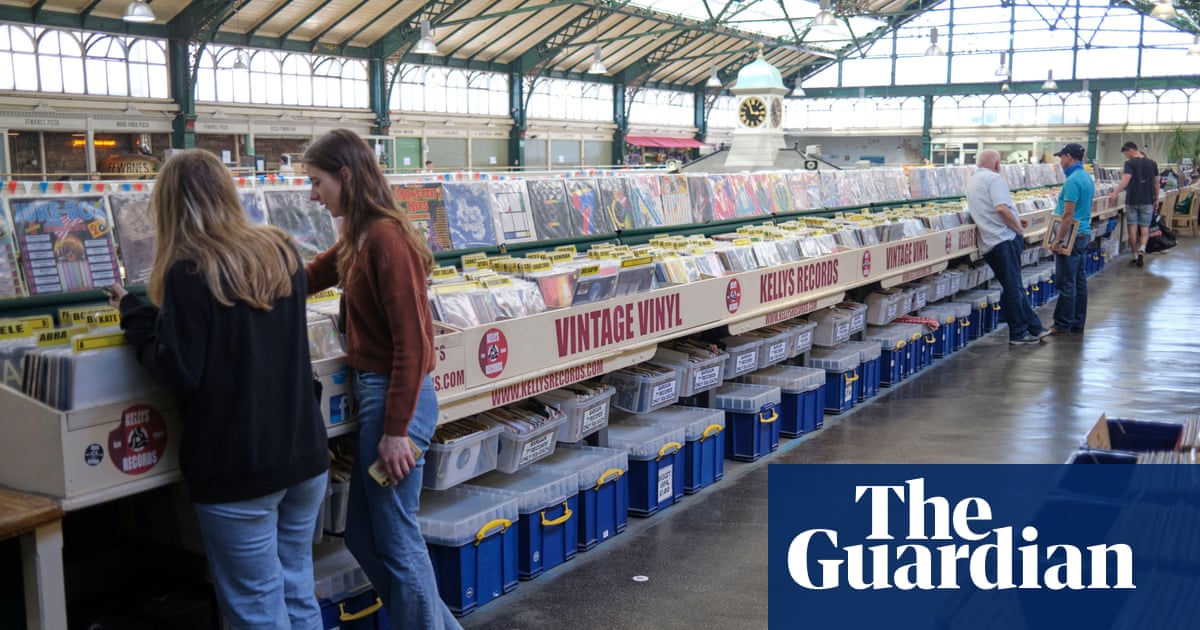For Bea, it was moments like when she found herself scrolling through news on the toilet that made her feel the need to reevaluate her relationship with her phone.
The 37-year-old from London was beginning to feel uncomfortable with the way notification sounds and the urge to pick up the phone were affecting her life. So when her iPhone broke more than a year ago, she decided it was time to switch to a device that allowed her to stay in touch with others while minimizing distractions.
Bea, who has two young children, opted for a Nokia 2720 Flip – a phone that bills itself as “a modern twist on the classic flip phone”. She made her choice after reading the study on the impact of screen use on children. “I found myself breaking all the rules I had about them, browsing and scrolling,” she said. “A line had been crossed – I didn’t want them to think that this is a normal way to go about your life, even if it is ordinary.”
Learning more about the ways smartphones and social media were designed to be addictive was another trigger. “I felt a wave of anger that these people made decisions about how I live my life every day,” she said.
Almost two decades after the first iPhone hit the market, a low-tech trend seems to be taking shape, with a growing minority swapping smartphones for “dumb phones” – or, perhaps in Bea’s case , dumbass.er the phones. “I went for it because there’s WhatsApp – it’s too complicated to live life without it,” she said.
With new models such as the Boring Phone, the trend is fueled in part by young people’s suspicion of the data-gathering and attention-grabbing technology they’ve grown up with, as well as a drive to live more offline. And while smartphones are the obvious target for this trend, the “newtro” movement (a portmanteau of “new” and “retro”) is heralding a resurgence of analog media, including tapes and zines, against the backdrop of enduring and very . -warned, vinyl boom.

While Jess Perriam, 39, grew tired of her Instagram post, she knew she wanted to hold a window into the lives of others. So she turned to Postcrossing, a site that connects people who want to send and receive postcards from strangers around the world. “I still wanted to have that connection with people and learn more about different cultures, but not necessarily while showing off aggressively,” she said, adding that she gets “loads of reading recommendations” through the post.
The community has more than 800,000 members in 207 countries, with 77 million postcards received since its inception in 2005. While its fastest growth occurred in the early 2010s, it lasted through the pandemic, and 400,000 postcards are posted each month.
While the hobby is quite affordable in Australia, where Perriam lives, she notes that the cost of stamps has become prohibitively expensive in other countries she has visited. In addition to writing to people she has never met, she also corresponds with an old friend in the US. When he sits down with a cup of coffee, Perriam thinks he can have a thoughtful conversation. “It forces me to sit down and think, what do I want to communicate to my friend — what are the headlines, what are the things that she would want to hear?”

The pair began this correspondence years ago, when Perriam’s friend was living in West Africa. “You feel like you can really get hold of someone – she was able to share parts of her daily life in Benin. I now have a collection of letters that are a memento of her time [there]and there’s someone who really got it.
“There’s something really special about having the physical evidence of our lives in each other’s letters,” Perriam added. “[There is] tangible evidence of a friendship to see – we have built a story that is truly tangible.”
Touch and other physical senses are also important to David Sax, author of Revenge of the Analog. “We’re open,” he said. “One of the benefits of analogue is its tangibility – things you can use, touch, taste and feel. There was this assumption that we were going to live in a digital future… The experience of the pandemic showed us a truth that we somehow we minimized it: we have bodies that exist in the physical world and we need to go places and touch things. We want more of the world than what is available in 20 cm of glass.”
Sax said the appeal of analog was here to stay, noting vinyl, film camera sales and the durability of paper books, but also the post-pandemic surge in in-person experiences like live music events and travel. But he doesn’t see it as a reaction against the encroachment of technology on our daily lives; he says most people who are embracing the low-tech movement are also using new digital technology where it’s appropriate and effective. Instead, it’s “a counterbalance to this thing that’s become the default for a lot of things in life.”
Rather than a purely nostalgic reflex, those aiming for film on their smartphone camera are often not of the generation that grew up using analog technology, Sax noted. “Fujifilm Instax market leader [instant camera] is a teenager The #1 selling records are by Taylor Swift,” he said. “It’s the younger generations who are driving the change – those older generations who grew up with analogue have nostalgia but are often enthralled by the magic of digital technology.”
For Andreas Nygren, a 25-year-old student in Tallinn, the physical nature of film is partly what draws him to digital photography. “With analog, you have to engage with what’s happening much closer—you’re much more in touch with the environment and the light,” Nygren said.
Nygren has also experimented with ditching social media and a smartphone, but has found it difficult to stay in touch with friends and university projects. “When you’re not active and you don’t send messages, people just forget about you and you don’t get invited to things,” he said. Instead, it is trying to divert most social media platforms in favor of SMS and WhatsApp messaging. “It’s about intentionality — you’re not just typing and scrolling, you’re thinking about saying something to a specific person.”
Over time, he noticed how over-reliance on digital technology had made him feel distant from the physical world. “It diminishes the vibrancy of life and makes you feel like you’re going crazy. It’s like being stuck in a cave staring at the wall of shadows, instead of being out in the world. analog [trend] it’s really just an attempt to counter it and recapture embodied reality.”



